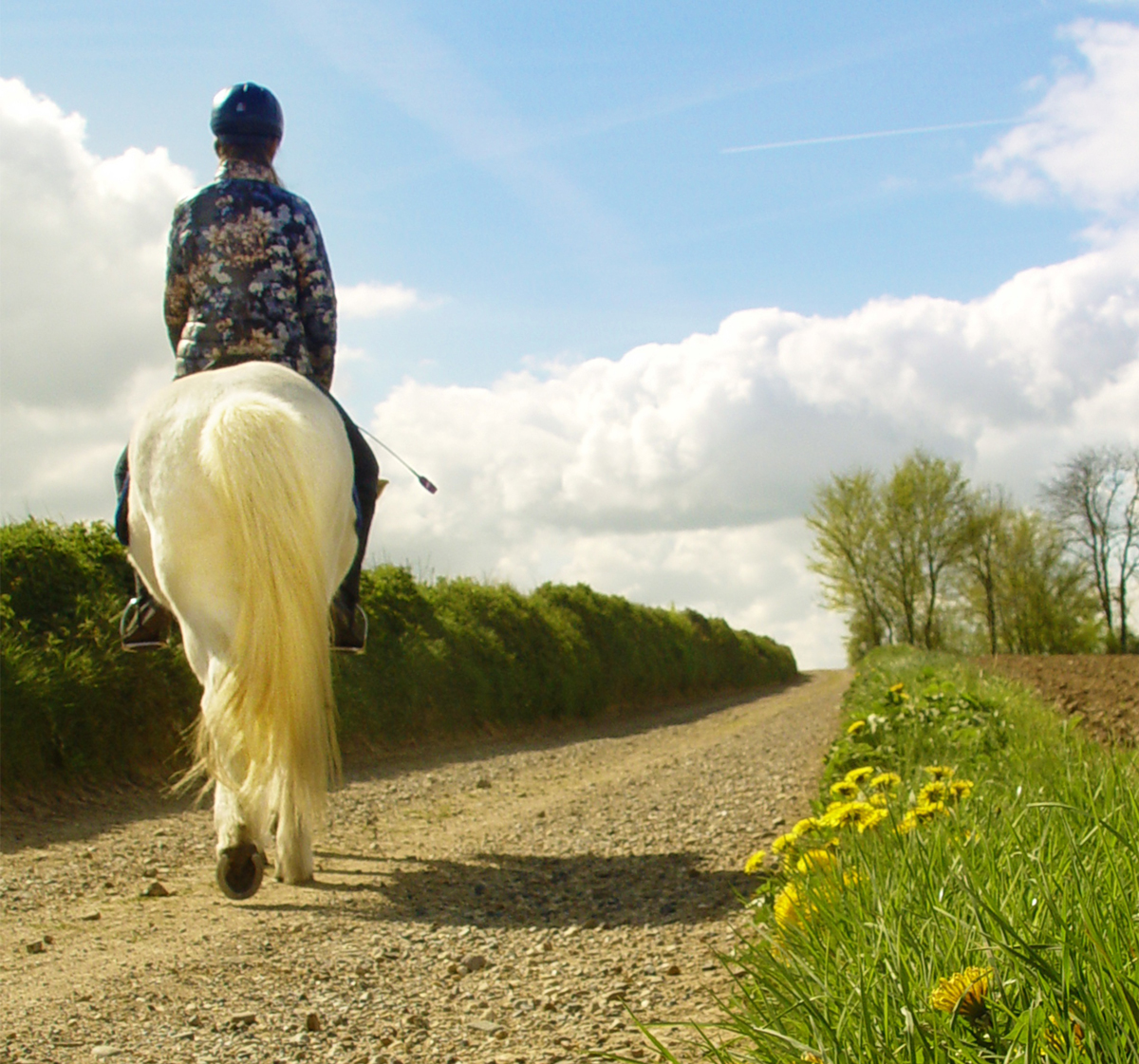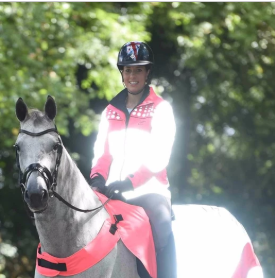Step 3: Walk your horse
Walking beside your horse down a quiet road is a great introduction to road work. Begin with a short 15-minute walk allowing your horse to stop and sniff. Lengthening the walk each week can help it get used to roads without too many distractions.
Step 4: Walk the horse with tack, saddle and bridle
Your next step is getting your horse used to wearing its saddle, bridle and tack while walking on the road. Even the calmest horse can get frightened when the saddle is put on, so take it one step at a time.
Remember that badly-fitting tack or saddles can cause behavioural problems due to pain and discomfort. So, check your equipment regularly.
Did you know our horse rider insurance covers saddlery and tack up to £2,500, with a single article limit of £1,000?
Step 5: Communicate with your horse
Listening to your horse’s unique needs and taking its lead is vital to success. Even when your horse is used to traffic it can easily become scared by a new circumstance or an inconsiderate driver.
Spending time with your horse and becoming familiar with its needs means you are best able to calm it down if something unexpected happens.

Step 6: Start riding
Once you and your horse are ready, it is time to start riding on the road. Try to mount your horse at the same location on your route and where he is most calm. Once your horse is comfortable riding on the road, introduce commands to develop your horse’s listening skills.
Step 7: Ride and repeat
Taking your time with each step is vital so it is important to repeat the exercise over and over again. By taking it slow you will be able to get even the most skittish horse used to different vehicles on the road, their particular noises and many other distractions. Spending time now will pay off in the long run.
The Highway Code gives detailed advice to riders on how to stay safe on the roads:
- Wear boots or shoes with hard soles and heels
- Wear light-coloured or fluorescent clothing in daylight and reflective clothing if riding at night or in poor visibility
- Try not to ride on the road at night or in poor visibility
- Ride with other, less nervous horses if you think that your horse will be nervous of traffic
- Ensure all tack fits well and never ride a horse without both a saddle and a bridle
- Keep to the left on the road
- Never carry another person or anything that might affect your balance
- Move in the direction of the traffic flow in a one-way street
- Never ride more than two abreast, and ride in single file on narrow or busy roads and when riding round bends
- Avoid roundabouts where possible
- Never ride your horse on a motorway
Whether you ride regularly or more occasionally, horse rider insurance from Equesure is a great way to protect yourself. With over 60 years’ experience in the insurance market, our team can offer you a bespoke insurance policy with options tailored for your particular needs.
Offering personal accident cover up to £10,000 for juniors and £20,000 for adults our policies also cover emergency vet fees up to the value of £1,500.
Request a quote or give our horse rider insurance team a call today – they’ll be happy to talk you through the benefits.





